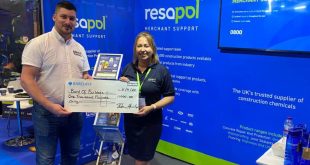1000 hectares, which would covers an area twice as big as the 2012 Olympic Park in London, have been restored to provide a much needed diverse range of habitats including nearly 600 hectares of diverse grasslands, over 177 hectares of woodland, 100 hectares of heathland and 190 hectares of ponds and open water.
These habitats provide homes for 46 threatened of birds such as Twites, House Sparrows, Swifts and Turtle Doves, plus many species of wildlife – Brown hares, Water Voles, European Eel, Small Blue Butterfly and an extensive range of plant life including rarer species such as Bluebells.
In 2010 the partnership developed a Biodiversity Strategy with the aim of creating outstanding habitats on CEMEX land. The demanding target of 1000 hectares was set for the year 2020, but has just been reached with the 1000th hectare created at Hopwas Quarry, near Tamworth in the West Midlands.
Andy Spencer, Director of Sustainability, CEMEX UK comments: “The partnership with the RSPB has enabled us to enhance the natural environment surrounding our operations. While supplying our customers with concrete, cement, sand and stone we also aim to balance the needs of operations with the protection and enhancement of the natural world. The RSPB has been pivotal in helping us achieve this aim.
“The 1000th hectare that has just been created is a significant and outstanding milestone and our partnership to date has helped create some amazing places for communities and nature,” he concludes.
This is endorsed by Mike Clarke, Chief Executive RSPB: “Our nature is in trouble and we need to be creating habitats to reverse the population declines we have seen in many species, some of which are in danger of disappearing entirely.
“Working in partnership with CEMEX we have seen how land can be transformed from being an operational site or exhausted quarry into a vibrant home for wildlife. These new much needed habitats are attracting and becoming home to wildlife including threatened species. They are also offering fantastic amenities for local communities and nature lovers.
“The successes we are seeing are great examples of how conservationists and businesses can come together to create something special for wildlife and future generations to enjoy.”
The 1000th hectare was created at Hopwas quarry, an exhausted sand and gravel quarry. Heather cuttings containing seeds and other flora from an adjoining Site of Scientific Interest (SSSI) site has been spread over part of the site. This will encourage and help create heathland, typical of the surrounding area.
 Builders Merchants Journal – BMJ Publishing to Builders Merchants and the UK merchanting industry for more than 95 years
Builders Merchants Journal – BMJ Publishing to Builders Merchants and the UK merchanting industry for more than 95 years



